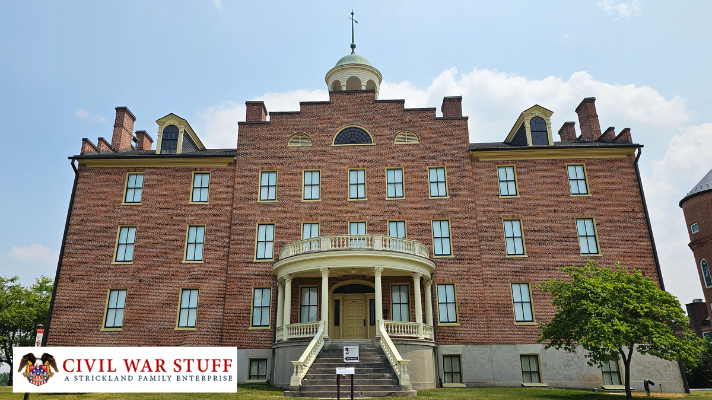The Lutheran Theological Seminary: Witness to History during the Battle of Gettysburg

Amidst the chaos and destruction of the Battle of Gettysburg, one prominent structure stood as a silent observer to the unfolding events — the Lutheran Theological Seminary. Perched atop Seminary Ridge, this historic institution became an unwitting witness to the bloodiest battle ever fought on American soil. With its rich history and strategic location, the seminary played a significant role in the story of Gettysburg.
A Beacon of Knowledge and Faith
The Lutheran Theological Seminary was established in 1826 to educate ministers for the Evangelical Lutheran Church. The seminary quickly became a hub of intellectual and spiritual pursuits, nurturing young minds and preparing them for their vocation. Its stately red brick buildings and picturesque campus made it an emblem of knowledge and faith.
The Seminary’s Role during the Battle
During the Battle of Gettysburg, which raged from July 1 to 3, 1863, the seminary found itself in the heart of the conflict. The ridge on which it stood provided a commanding view of the battlefield, making it an ideal location for Union forces to establish a strategic defensive line. The Confederate troops recognized the seminary’s significance and launched several assaults to seize control of the ridge.
Witness to the First Day’s Fury
On July 1, as the battle commenced, the Lutheran Theological Seminary became a focal point of the fighting. The Union’s I Corps, under the command of General John Reynolds, initially used the seminary’s cupola as an observation post to assess the Confederate advance. Sadly, it was here that General Reynolds fell, struck down by a Confederate sniper’s bullet.

Conversion into a Hospital
With the arrival of wounded soldiers, the seminary soon transformed into a makeshift hospital. The buildings and grounds were crowded with the wounded from both sides of the conflict as surgeons and nurses worked tirelessly to tend to their injuries. The seminary’s tranquil halls witnessed the pain and suffering brought about by war.
The Controversial Use of the Cupola
The seminary’s cupola continued to play a pivotal role during the battle. Confederate sharpshooters occupied it, using its elevated position to fire upon Union soldiers. The Union forces responded by targeting the cupola, damaging the structure. This strategic vantage point exchanged hands multiple times during the battle, with its occupation signaling momentary victories for either side.
Post-Battle Legacy
Following the Battle of Gettysburg, the Lutheran Theological Seminary bore witness to the devastation and loss caused by the conflict. The seminary’s buildings served as temporary shelters for wounded soldiers during the following months of recovery. The scars of war were etched onto the campus, reminders of the sacrifices made by countless individuals.
Preserving History
Today, the Lutheran Theological Seminary remains a significant historical site. It serves as a reminder of the profound impact the Battle of Gettysburg had on American history and the role played by the seminary in the struggle. The seminary’s cupola, restored to its former glory, symbolizes resilience and remembrance.
The Seminary Today
The Seminary continues to serve as a training ground for future church leaders. Graduates serve churches all across the ecumenical spectrum locally, nationally, and internationally. They are equipped to serve in different callings as public leaders in church and society, in parish ministry, specialized chaplaincy, diaconal ministries, and social service organizations. The well-recognized building with cupola (one of many on campus) houses a museum and visitors may climb to the cupola to get the same view Union commanders did prior to the battle.




